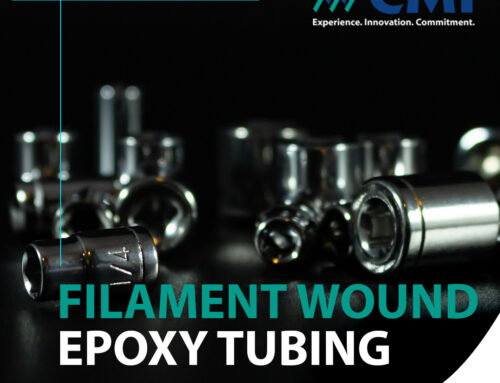
Did you know that over 90% of households in the United States use thermal insulation to keep their homes warm during winter and cool in summer? With an increasing need for energy efficiency, finding the right insulator is more important than ever.
High thermal conductivity insulators are a top choice for reducing heat transfer and saving energy costs. As a technical writer in thermal insulation, it’s essential to highlight some of the best high thermal conductivity insulators available.
In this article, we’ll explore some of the top options for homeowners and businesses. From aerogels to silica aerogel blankets, and thermal gap pads, these materials boast impressive R-values while being lightweight and easy to install. So whether you’re looking to upgrade your home or commercial building’s insulation, read on to discover some innovative solutions.
Understanding Thermal Conductivity And Its Importance

Thermal conductivity is the property of a material to conduct heat. It measures how quickly heat passes through an insulator and into another medium. An insulator with high thermal conductivity allows for a more efficient heat transfer, while one with low thermal conductivity slows down this process.
Understanding thermal conductivity is essential in choosing the right insulator for your needs. Materials that are good at conducting heat make excellent energy savers since they can absorb and release large amounts of thermal energy.
On the other hand, materials with poor thermal conductivity work best as insulators because they trap the energy within their structure. The temperature dependence of thermal conductivity also plays a crucial role in selecting an appropriate insulating material for a given application.
Ceramic-Based Insulators And Their Properties

Ceramic-based materials come into view as we search for top high thermal conductivity insulators.
Ceramic insulators are known to have low density and can withstand extremely high temperatures without breaking down or losing their properties.
Their thermal properties make them ideal for use in electrical insulation applications.
Ceramic-based insulators are made from various types of ceramics like alumina, zirconia, mullite, and silicon carbide.
The most significant advantage of using these materials is their high thermal conductivity measurement values, allowing them to resist heat energy flow effectively.
In addition, they possess excellent wear resistance and chemical stability, which makes them suitable for harsh environments such as those found in power plants and metal processing industries.
Moving forward, let us delve into diamond-based insulators and their applications for enhancing the efficiency of conventional electronic systems.
Diamond-Based Insulators And Their Applications
It is worth exploring diamond-based insulators and their applications moving on from ceramic-based insulators. These insulators are known for their high thermal conductivity properties and are commonly used in the electronics, aerospace, and energy industries.
Diamond-based insulators have the potential to be extremely effective in various applications due to their unique characteristics. They offer excellent mechanical strength and exceptional thermal conductivity, making them ideal for electronic devices where heat dissipation is crucial.
Furthermore, they can withstand extreme temperatures and pressures, making them well suited for harsh environments such as those in space exploration or deep-sea drilling operations. With these advantages, diamond-based insulators continue to evolve as a promising option for future technological advancements.
As we move into thermal insulation solutions, it’s worthwhile to consider graphene-based insulators and their benefits. While diamond-based materials possess impressive capabilities, research has shown that graphene may offer even greater opportunities for achieving higher performance levels across a wide range of industrial sectors.
Graphene-Based Insulators And Their Benefits
Like a conductor leading an orchestra, graphene-based insulators conduct thermal energy with unmatched efficiency. Their high thermal conductivity allows for the rapid dissipation of heat and is one of their most significant benefits as insulating materials.
Graphene-based insulators are unique in that they can dissipate heat rapidly without compromising on other mechanical properties. These high-performance insulators have numerous applications across industries such as electronics, aerospace, and automotive sectors where temperature management is critical.
Graphene-based insulation has resulted in improved performance, longer lifespan, and reduced maintenance costs for many products. In the subsequent section, we will compare the top high thermal conductivity insulators to understand the benefits these remarkable materials offer better.
Comparing The Top High Thermal Conductivity Insulators
When it comes to thermal insulation, the material’s ability to conduct heat is crucial. The higher the thermal conductivity of an insulator, the better it is at preventing heat transfer. Therefore, high thermal conductivity insulators are ideal for applications where maximum energy efficiency is required.
Some of the top high thermal conductivity insulators include aerogel, vacuum insulated panels (VIPs), and spray foam insulation.
Aerogel has one of the lowest thermal conductivities compared to other types of insulation materials in use today.
VIPs also have excellent thermal conductivity as they contain a panel with layers separated by a vacuum which minimizes conduction and radiation heat loss.
Spray foam insulation expands into every nook and cranny within wall cavities. It creates a tight seal that significantly reduces airflow between the interior and exterior environments while providing exceptional R-value per inch thickness due to its solid nature.
These three types of insulation stand out from others due to their superior performance levels when considering factors like environmental impact or cost-effectiveness.
In conclusion, selecting high-performance insulation can be challenging; however, if we carefully consider economic and technical parameters, we will undoubtedly achieve our desired results with minimal negative impacts on our environment over time.
Frequently Asked Questions
How Is Thermal Conductivity Measured In Insulators?
Did you know thermal conductivity is measured in Watts per meter Kelvin (W/mK)? It’s a fascinating statistic for those interested in the science of thermal insulation.
In technical terms, thermal conductivity refers to the ability of a material to conduct heat through it. For insulators, this measurement becomes crucial as they are designed to reduce or eliminate heat transfer between two surfaces at different temperatures.
As an audience that values inclusion and belonging, understanding how thermal conductivity affects our daily lives can be empowering. Knowing which materials provide better thermal insulation can help us make informed decisions about energy usage and home improvement projects.
So, let’s explore how we measure thermal conductivity in insulators!
Can High Thermal Conductivity Insulators Be Used In Electrical Applications?
High thermal conductivity insulators are used in various industries, including electrical applications. These types of insulators can conduct heat efficiently while maintaining their insulation properties.
However, it is essential to note that not all high thermal conductivity materials are suitable for electrical use due to their potential for electrical conduction. Materials such as aluminum nitride and diamond have been found to be excellent choices for electrical applications because of their exceptional thermal conductivity combined with strong dielectric properties.
Overall, selecting the right high thermal conductivity insulator depends on the specific application requirements and careful consideration of both thermal and electrical properties.
Are There Any Environmental Concerns With Using Diamond-Based Insulators?
When it comes to diamond-based insulators, some environmental concerns need to be taken into account.
While they offer excellent thermal conductivity properties for electrical applications, mining and refining diamonds can significantly impact the environment, especially if done irresponsibly or unsustainably.
Additionally, synthetic diamonds may mitigate this issue somewhat, but it’s important to consider their overall carbon footprint.
As such, while diamond-based insulators may be an option worth exploring in certain contexts, weighing the potential benefits against any negative impacts they might have on our planet is crucial.
Can Graphene-Based Insulators Be Easily Produced On A Large Scale?
Graphene-based insulators have been gaining attention as a potential solution for thermal insulation due to their high thermal conductivity.
However, producing graphene on a large scale can be challenging and expensive.
While progress has been made in improving the scalability of production methods, more research is needed before widespread adoption can occur.
Nevertheless, the potential benefits of using graphene-based insulators are significant, including improved energy efficiency, reduced emissions, and lower costs over time.
As such, it’s important to continue exploring this technology to determine its viability as a top-tier thermal insulator option that could benefit people everywhere.
How Do The Costs Of These Top High Thermal Conductivity Insulators Compare To Traditional Insulators?
When it comes to thermal insulators, cost is always a factor. The question of how the costs of these materials compare to traditional options is important.
Fortunately, some top high thermal conductivity insulators have proven themselves as viable alternatives. These advanced materials offer superior performance in terms of heat transfer and can be produced on a large scale at reasonable prices.
Investing in these modern solutions may be a wise choice for those seeking to reduce their energy consumption and lower their carbon footprint.
Conclusion
In conclusion, the top high thermal conductivity insulators offer a promising solution for various industries. These insulators are measured by their ability to conduct heat and can also be used in electrical applications.
However, some environmental concerns may arise with diamond-based insulators. On the other hand, graphene-based insulators have shown potential but require further research on large-scale production.
Despite these challenges, utilizing high thermal conductivity insulators is worth considering as they offer improved efficiency and performance compared to traditional options. As a technical writer in the field of thermal insulation, it’s essential to stay informed about advancements in this area and consider how they can benefit different industries while keeping sustainability in mind.





